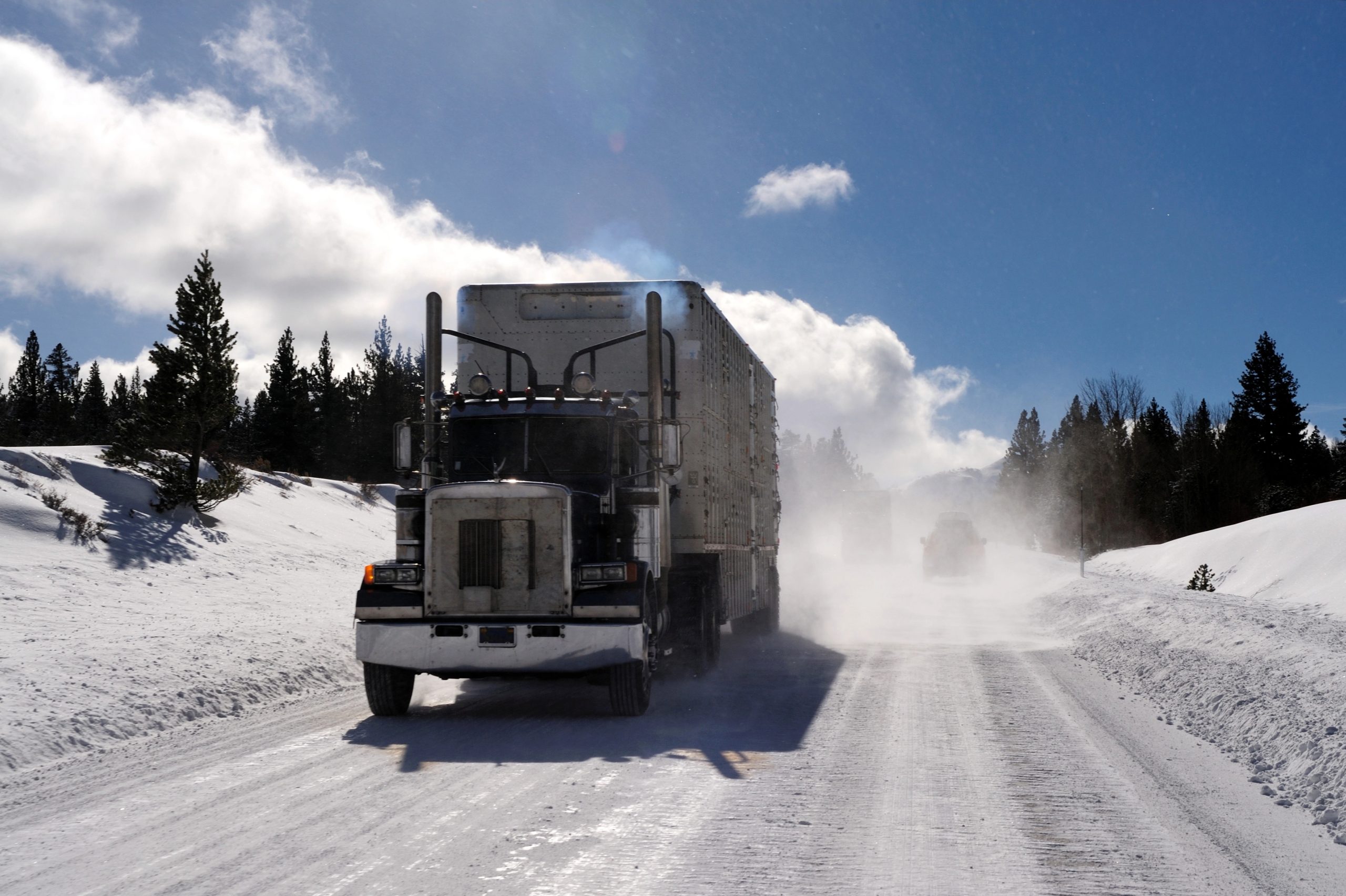Maximizing Your Hours of Service During Adverse Weather: Best Practices for Using the Adverse Driving Exception

As winter intensifies in early 2025, it’s essential to revisit one of the most valuable provisions offered by the Federal Motor Carrier Safety Administration (FMCSA)—the Adverse Driving Conditions Exception.
Given the unpredictable nature of winter weather—where light precipitation can rapidly evolve into hazardous conditions—it’s critical to understand how to prioritize driver safety while optimizing Hours of Service compliance.
Certain weather conditions may require drivers to come to a complete stop, such as sudden heavy fog or unexpected icy patches on an otherwise clear roadway.
In these instances, the Adverse Driving Conditions Exception is instrumental in ensuring that drivers do not lose valuable driving hours while waiting for conditions to improve, allowing them to resume operations safely and efficiently.
Understanding the Basics
The FMCSA introduced the Adverse Driving Conditions Exception to provide truck drivers with flexibility when encountering unexpected and hazardous conditions. As of the summer of 2020, the FMCSA clarified this rule, specifying that “adverse conditions can be defined as snow, ice, sleet, fog, or other adverse weather conditions or unusual road or traffic conditions that couldn’t be reasonably known to a driver before the start of the on-duty period or immediately after a rest period, and to a motor carrier before dispatching the driver.”
This exception allows drivers to extend their driving and on-duty time by up to two hours when faced with such conditions. This extension is crucial for drivers who might otherwise be forced to stop in unsafe or impractical locations or risk non-compliance with HOS regulations.
When and How to Use the Adverse Driving Conditions Exception
While the FMCSA provides specific examples of adverse conditions—such as snow, ice, sleet, fog, or unexpected road closures—there is still some ambiguity about what situations qualify. Here’s a breakdown of how to appropriately use this exception, especially during winter months when weather conditions are most extreme.
- Assess the Situation: The key to using this exception correctly lies in whether the adverse condition could have been anticipated. If weather forecasts predicted a snowstorm before your trip began, you can’t use the exception to justify delays caused by that storm. However, if a sudden ice storm forms while you’re en route, or if unexpected fog severely limits visibility, you are within your rights to apply the exception.
- Winter-Specific Scenarios:
- Snow and Ice: Sudden snow squalls or black ice can appear without warning, especially in mountainous regions or during rapid temperature drops. If you encounter these conditions unexpectedly, you can extend your driving time to find a safer stopping point.
- Fog: Dense fog can severely impair visibility and create hazardous driving conditions. If this fog wasn’t predicted and forms suddenly, the exception applies.
- Road Closures: Winter weather can cause road closures due to accidents, fallen trees, or emergency response activities. If these closures couldn’t have been anticipated, the exception can be invoked.
- Document Everything: Proper documentation is critical. Record the adverse conditions in your ELD system, noting the time, location, and nature of the weather or road conditions. This not only keeps you compliant but also protects you during audits.
- Safety First: While the Adverse Driving Conditions Exception allows for extended hours, it’s not a license to take unnecessary risks. Always prioritize safety. If conditions become too dangerous to proceed, it’s better to find a safe place to stop and wait for the weather to improve.
Staying Safe While Using the Adverse Driving Conditions Exception
While the Adverse Driving Conditions Exception provides flexibility, it should always be used with caution. The primary goal is to ensure that drivers can continue their journey without compromising safety. Here’s how to stay safe while making the most of this exception:
- Evaluate Your Limits: Understand your own comfort level and driving experience in adverse conditions. If you don’t feel confident navigating through snow, ice, or fog, it’s better to err on the side of caution and stop.
- Monitor Road Conditions Continuously: Conditions can change rapidly, especially in winter. Keep an eye on weather updates, listen to traffic reports, and use apps that provide real-time road condition information.
- Use the Exception Judiciously: Only apply the Adverse Driving Conditions Exception when absolutely necessary. It’s a valuable tool, but overusing it can lead to complacency. Ensure that each use is justified and documented.
- Maintain Communication: Regularly update your dispatcher about your location and the conditions you’re facing. This helps them support your decisions and adjust schedules as needed.
- Prepare Your Vehicle: Ensure your truck is equipped for winter driving. This includes having proper tires, functioning defrosters, and emergency supplies like blankets, food, and water.
- Don’t Push Beyond Safe Limits: Even with the extra time provided by the exception, if conditions deteriorate to the point where driving becomes dangerous, find a safe place to stop. Your safety and the safety of others on the road are far more important than meeting a deadline.
Common Misunderstandings and Clarifications
Because the rule leaves some room for interpretation, drivers often have questions about its application. Let’s address a few common scenarios:
- Unusual Traffic Delays: If a paddling of ducks causes a significant traffic jam, could this qualify? Technically, if the traffic delay was truly unforeseen and couldn’t have been predicted at the start of your duty period, it might qualify. However, such situations are rare and would require thorough documentation.
- Non-Weather-Related Hazards: What about an unexpected oil spill? If the spill creates hazardous driving conditions that couldn’t have been anticipated, it could be considered an adverse condition under FMCSA guidelines.
- Known Weather Forecasts: If adverse weather was forecasted before your trip began, the exception does not apply. Drivers and carriers are expected to plan routes and schedules with known weather conditions in mind.
The Role of Your ELD Provider in Applying the Exception
Another critical factor in effectively using the Adverse Driving Conditions Exception is your ELD provider. Not all ELD systems are created equal—some make it cumbersome to apply this exemption, while others streamline the process.
For example, GPSTab, a leading ELD provider, offers a user-friendly interface that makes it easy to apply the Adverse Conditions rule. This flexibility ensures that you can focus on driving safely without worrying about complicated paperwork or system navigation.
Adverse weather conditions are an unavoidable part of life on the road, especially during the winter months. However, with a thorough understanding of the Adverse Driving Conditions Exception and the right tools at your disposal, you can maximize your Hours of Service while staying safe and compliant.
Remember, the key to using this exception effectively lies in proper planning, clear documentation, and choosing an ELD provider like GPSTab that values flexibility and ease of use. By staying informed and prepared, you can navigate even the most challenging weather conditions without letting them derail your schedule or compromise your safety.




